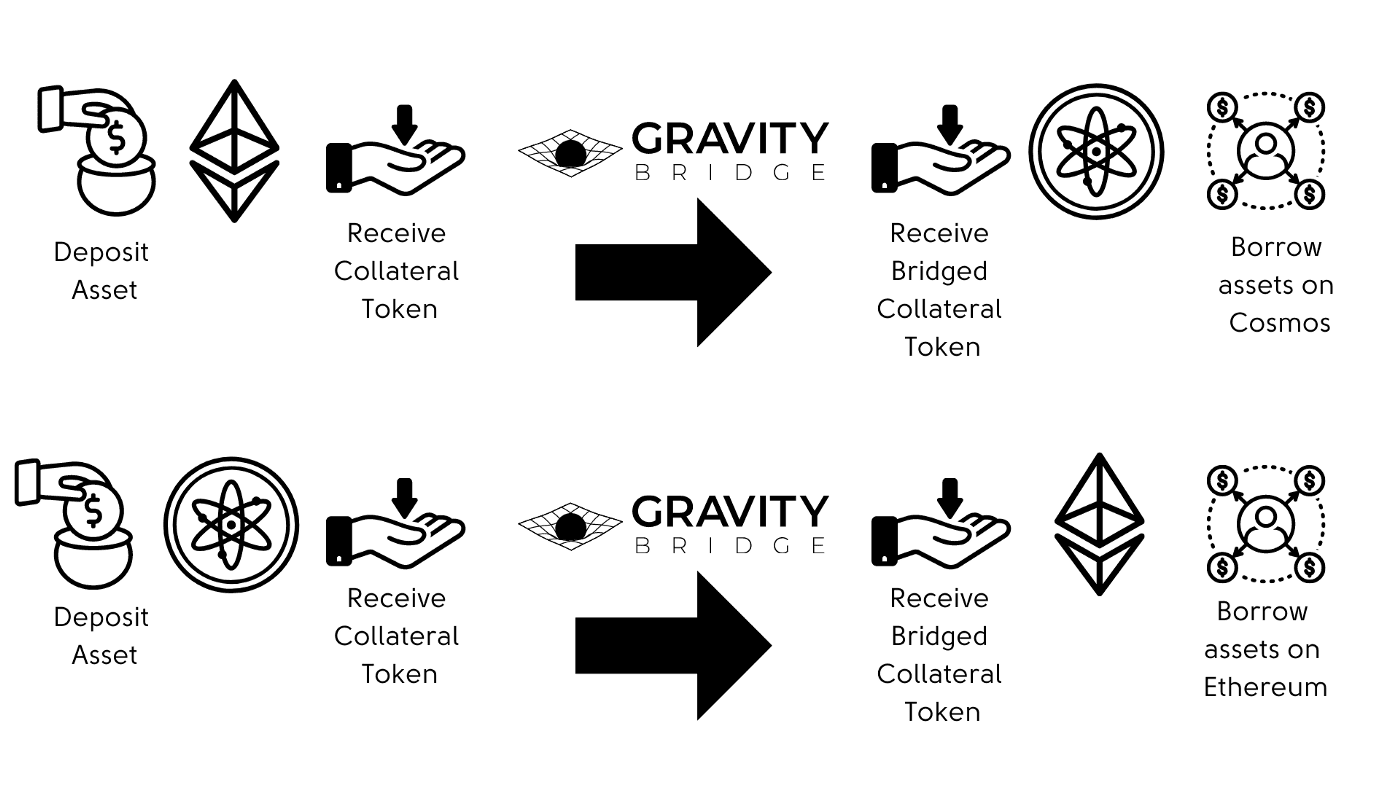Introducing Interchain Leverage — Borrowing and Lending Across Blockchains (Part 1)

Umee unlocks new levels of capital efficiency and cross chain interactions by allowing users to leverage assets across blockchains to be used for borrowing and lending activities. By utilizing bridging technologies, Umee intends to create new dimensions for how IBC assets from the Cosmos ecosystem are able to integrate with the broader world of DeFi money legos. To bring about a vision of further interoperability in the blockchain space, Umee will implement several tools and protocols for building out a multi-chain world.
This post will detail one of the main pillars of Umee which gives an overview of the initial Whitepaper concept while elaborating on some of the logic of this design. Interchain leverage will be a cornerstone of the broader Umee Cross Chain DeFi hub and will complement the other main pillars which will be detailed in future blog posts.
Why we like Borrowing and Lending
Borrowing and lending in the #TradFi ecosystem encumpasses a multi-trillion dollar market with various dynamics and permutations of how relationships can exist across assets. DeFi borrowing and lending is just getting started, and we are thrilled to be building out some of these new iterations.
One of my favorite inventions in this defi space would definitely be the collateral token. Pooled borrowing and lending protocols like Compound and Aave among many more DeFi protocols use this tool for improving capital efficiency. Here is a nice shoutout to Dan Elitzer for introducing the concept:
One thought experiment that we have considered when working in DeFi has been around looking at the largest pooled borrowing and lending protocols out there, namely Compound and Aave. When you think about it, technically if Compound and Aave were to merge, they would simply need to accept each other’s collateral tokens. If compound accepted Aave a-tokens and Aave accepted Compound c-tokens, you would essentially have a merge of the two capital pools.
This dynamic would open many permutations of how borrowing and lending protocols can work together and find more interactions. For the Umee protocol, we wish to embrace several of these ideas while we’re iterating the product. To expound upon the topic of utilizing multiple types of collateral, I am also a big fan of what other protocols are using. One of my favorites is a concept introduced by Aave that utilizes AMM LP tokens as collateral for borrowing: https://medium.com/aave/aave-amm-market-released-73ae76a7cbc0
In the Umee ecosystem, we are exploring a similar concept as it pertains to staked proof of stake consensus assets as well as other novel approaches to collateral assets. This is likely something that we will explore in a future post!
Building on Previous Work — Standing on the shoulders of Giants
For the Umee network, we hope to combine the functionalities of collateral tokens along with a decentralized cross chain bridge such as the Gravity Bridge that we are implementing on top of the Cosmos SDK side of the Umee network.
By bridging collateral tokens, you are essentially able to allow borrowing and lending relationships to exist across blockchains.
Diagram 1

As described in the diagram, a user on Ethereum can deposit assets into a pooled borrowing and lending platform on Ethereum. In exchange for their asset deposit, they will receive a collateral token. In the case of Umee, let us call it a uToken. What is special about the Umee network is that after a uToken is created on the Ethereum side, it can actually get bridged over to the Cosmos blockchain via the Gravity Bridge and exist as an IBC compatible token.
Once a Cosmos based IBC token, this asset can be traded on Dex’s and participate in all sorts of defi use cases, including being used as collateral for borrowing and lending. The collateral token can be deposited into a pooled borrowing/lending protocol and used to borrow native IBC assets that exist on the Cosmos based borrowing and lending platform.
The reverse is also possible! A holder of an IBC asset in the Cosmos ecosystem is able to deposit into Umee in exchange for an Umee uToken. After receiving the uToken, the user is able to bridge the uToken via the Gravity Bridge to Ethereum and use that token as collateral for borrowing assets native to the Ethereum ecosystem.
Gravity Bridge?
The Gravity Bridge will connect between a probabilistic finality blockchain like the current Ethereum blockchain with a fast finality proof of stake blockchain like Cosmos. The three main pieces are:
- Orchestrator
- Ethereum lite client
- Gravity Module
This bridge is based off of one of the original two way peg mechanisms detailed in the Cosmos ecosystem called Peggy. There have been multiple iterations of Peggy throughout the years, and I would say that we are happy to have one of the most hardened and tested versions of this protocol implemented on the Umee network. We will likely have a separate blog post entirely on the Gravity Bridge at some point in the near future.
Up Next
In our next blog post, we’ll be discussing how Umee further integrates into the rest of money legos. As a cross chain DeFi hub, the Umee network will be identifying various mechanisms for building out tools and infrastructure that other DeFi protocols can build on top of. As we iterate on these product ideas, we will be on the lookout for new permutations on how these pieces can stack on top of each other as well as areas of innovation where new ideas can develop.
Umee — Bringing DeFi to you and me
